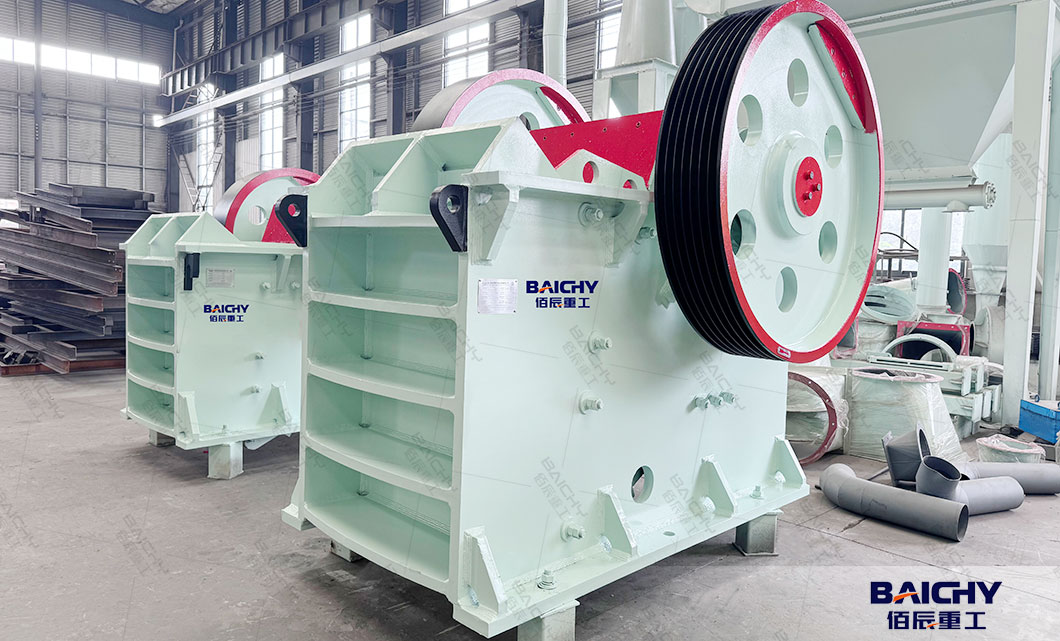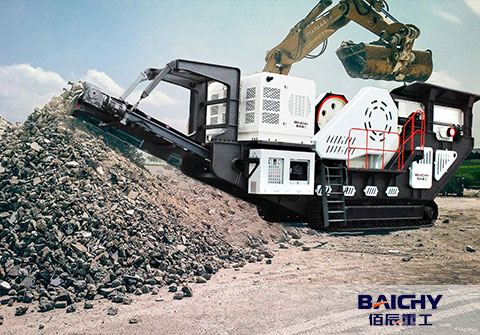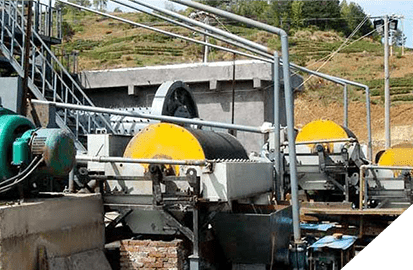100tph andesite stone crusher plant with a primary jaw crusher and a secondary fine jaw crusher is a common setup in the stone crushing industry. Here is an introduction to such a plant:

Primary Jaw Crusher
Function: The primary jaw crusher is the first stage of crushing in the andesite crushing plant. It is designed to handle large-sized andesite stones directly from the quarry or mining site. Its main function is to reduce the size of the raw material to a more manageable size for further processing by the secondary crusher.
Working Principle: It operates based on the principle of compression. The movable jaw plate moves towards and away from the fixed jaw plate in a reciprocating motion. When the movable jaw approaches the fixed jaw, the stones trapped between them are crushed by the compressive force exerted. As the movable jaw moves away, the crushed material is discharged through the bottom opening of the crusher.
Advantages:
1. High Crushing Ratio: It can achieve a significant reduction in the size of the input andesite material, typically with a crushing ratio ranging from 4 to 6.
2. Simple Structure: The design of the primary jaw crusher is relatively simple, consisting mainly of a frame, jaw plates, eccentric shaft, and flywheel. This simplicity makes it easy to operate, maintain, and repair, reducing downtime and maintenance costs.
3. Robust and Durable: Built with heavy-duty materials and a sturdy construction, it can withstand the impact and abrasion of large, hard stones, ensuring a long service life even in harsh working conditions.
Example Model: The PE500×750 jaw crusher is often used as a primary crusher in a 100tph stone crusher plant. It has an inlet opening of 500mm×750mm, can handle a maximum feed size of 425mm, and has an adjustable discharge opening ranging from 50 to 100mm. With a rotational speed of 250rpm and a motor power of 45kW, it can achieve a processing capacity of 40 to 130tph, which is suitable for the primary crushing stage of the 100tph andesite crushing plant.

Secondary Fine Jaw Crusher
Function: The secondary fine jaw crusher comes after the primary crusher and is responsible for further reducing the size of the crushed material from the primary crusher to produce finer particles. It helps to achieve the desired final product size and improve the quality of the crushed stone.
Working Principle: Similar to the primary jaw crusher, it also uses the compression mechanism. However, the secondary fine jaw crusher usually has a smaller feed opening and a more precise adjustment of the discharge opening to produce a more uniform and finer product size.
Advantages:
1. Better Product Shape: It can produce more cubical and uniform-shaped particles compared to some other crushers, which is beneficial for applications where the shape of the crushed stone matters, such as in construction and road building.
2. High-Quality Final Product: By further refining the crushed material, it helps to remove any remaining oversized or irregularly shaped pieces, resulting in a higher-quality final product that meets the specific requirements of different industries.
3. Versatility: It can handle a variety of materials with different hardness levels, making it suitable for processing different types of stones and ores.
Example Model: The PEX250×1200 fine jaw crusher is a common choice for the secondary crushing stage in a 50tph stone crusher plant. It has an inlet opening of 250mm×1200mm, a maximum feed size of 210mm, and a discharge opening adjustable from 20 to 61mm. With a motor power of 37kW and a rotational speed of 330rpm, it can achieve a processing capacity of 20 to 61tph, which, when combined with an appropriate primary crusher, it needs 2 sets to meet the overall 100 tph andesite crushing plant.

Overall Stone Crusher Plant
Process Flow: The stone crusher plant typically starts with the feeding of large stones into the primary jaw crusher. After the primary crushing, the crushed material is transferred to the secondary fine jaw crusher via a conveyor belt. The secondary crusher further processes the material to the desired final size, and the finished product is then discharged and can be screened or sorted according to different size fractions for various applications.
Applications: The crushed stone produced by the 100tph stone crusher plant has a wide range of applications. It is commonly used in construction for making concrete, asphalt, and road base materials. It is also used in the building materials industry for manufacturing sand, gravel, and other aggregates. Additionally, it can be used in mining, metallurgy, and chemical industries for further processing of ores and minerals.
Benefits:
1.Cost-Effective: By having a combination of primary and secondary crushers, the plant can achieve efficient crushing with relatively low energy consumption and operating costs. The staged crushing process allows for better utilization of the crushers' capabilities and reduces the wear and tear on each individual crusher, resulting in longer equipment life and lower replacement costs.
2.Customizable: The plant can be customized according to the specific requirements of the customer, such as the desired final product size, production capacity, and the type of material to be crushed. This flexibility makes it suitable for different projects and industries.
3.Environmentally Friendly: Modern stone crusher plants are often equipped with dust suppression and noise reduction systems to minimize the environmental impact. This helps to reduce air pollution and noise levels, making the operation more environmentally friendly and compliant with relevant regulations.








 2025-04-13
2025-04-13





















 86-15093113821
86-15093113821
 86-15093113821
86-15093113821

